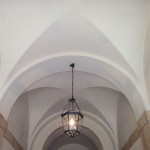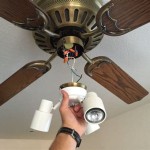The Benefits of High Ceiling LED Lighting Systems
High ceiling LED lighting systems represent a significant advancement in illumination technology, particularly for commercial, industrial, and institutional spaces. These systems are designed to effectively and efficiently light areas with elevated ceilings, offering numerous advantages over traditional lighting solutions. The adoption of LED technology tailored for high ceilings contributes to improved energy efficiency, enhanced lighting quality, and reduced maintenance costs, ultimately creating a more productive and safer environment.
The unique requirements of lighting expansive, high-ceilinged spaces necessitate specialized design considerations. Standard lighting fixtures often lack the requisite intensity and distribution patterns to adequately illuminate these areas. High ceiling LED systems are engineered to address these challenges, providing focused and powerful light output capable of reaching the floor effectively. This article explores the multifaceted benefits of implementing high ceiling LED lighting systems.
Energy Efficiency and Cost Savings
One of the most compelling benefits of high ceiling LED lighting systems is their superior energy efficiency compared to traditional lighting options such as metal halide or high-pressure sodium lamps. LEDs, or Light Emitting Diodes, convert a significantly higher percentage of electricity into light, with minimal energy wasted as heat. This inherent efficiency translates directly into lower energy consumption and reduced electricity bills. For large facilities with numerous high-ceiling fixtures operating for extended periods, the cumulative energy savings can be substantial.
The long lifespan of LED fixtures further contributes to cost savings. LED lights typically last significantly longer than traditional bulbs, often exceeding 50,000 hours of operation. This extended lifespan reduces the frequency of replacements, minimizing labor costs associated with maintenance and reducing the overall expense of purchasing replacement lamps. In environments with high ceilings, replacing lamps often requires specialized equipment and trained personnel, making the extended lifespan of LEDs especially valuable.
Beyond reduced energy consumption and extended lifespan, many high ceiling LED lighting systems incorporate advanced control features that further enhance energy efficiency. These features may include dimming capabilities, occupancy sensors, and daylight harvesting systems. Dimming allows for adjusting the light output based on specific needs or time of day, reducing energy consumption during periods of lower activity or when natural light is abundant. Occupancy sensors automatically turn lights on when movement is detected and off when the area is unoccupied, preventing unnecessary energy waste. Daylight harvesting systems utilize sensors to detect the amount of natural light available and automatically adjust the artificial lighting output to maintain a consistent illumination level, maximizing energy savings.
The initial investment in high ceiling LED lighting systems may be higher than traditional lighting options, but the long-term cost savings associated with reduced energy consumption, lower maintenance costs, and extended lifespan typically result in a rapid return on investment. Many businesses and organizations find that the payback period for switching to LED lighting is relatively short, often within a few years, making it a financially sound decision.
Improved Lighting Quality and Performance
High ceiling LED lighting systems offer significant improvements in lighting quality compared to traditional lighting solutions. LEDs provide a more consistent and uniform light distribution, reducing glare and shadows that can cause eye strain and fatigue. This improved lighting quality enhances visibility, making it easier to perform tasks and navigate the space. In industrial environments, better visibility can improve worker safety by reducing the risk of accidents and injuries.
LEDs also offer a wider range of color temperatures and color rendering indices (CRI) than traditional lighting options. Color temperature refers to the perceived warmth or coolness of the light, measured in Kelvin (K). LEDs can be selected with specific color temperatures to create the desired ambiance, ranging from warm, inviting light to cool, bright light. CRI measures how accurately a light source renders the colors of objects compared to natural sunlight. LEDs with high CRI values provide more accurate color representation, which is particularly important in applications where color accuracy is critical, such as manufacturing, inspection, and retail environments.
Unlike traditional lighting options, LEDs do not produce ultraviolet (UV) or infrared (IR) radiation. UV radiation can damage sensitive materials and fade colors, while IR radiation can contribute to heat buildup. The absence of UV and IR radiation makes LEDs a safer and more environmentally friendly lighting option. The instant-on capability of LEDs is another advantage compared to traditional lamps, which may take several minutes to reach full brightness. This instant-on feature ensures that adequate lighting is available immediately when needed, improving safety and productivity.
The directional nature of LED light output also allows for more precise control of light distribution. This focused light output minimizes light pollution and ensures that light is directed where it is needed most, maximizing efficiency and minimizing wasted light. The ability to customize the light distribution pattern further enhances the performance of high ceiling LED lighting systems, allowing for optimal illumination of specific areas or objects.
Reduced Maintenance and Operational Costs
The long lifespan of LEDs significantly reduces maintenance requirements compared to traditional lighting systems. With fewer replacements needed, the labor costs associated with lamp changes are drastically reduced. This is especially beneficial in high-ceiling environments, where lamp replacements often require specialized equipment and trained personnel. The reduced maintenance also minimizes disruptions to operations, as there is less downtime associated with lighting maintenance.
LEDs are also more durable and resistant to vibration and impact than traditional lamps. This durability makes them well-suited for industrial environments where harsh conditions and vibrations are common. The solid-state design of LEDs eliminates fragile components, such as filaments, that are prone to failure in traditional bulbs. The robust construction of LEDs contributes to their extended lifespan and reduces the risk of damage during installation and operation.
The reduced heat output of LEDs also contributes to lower operational costs. Traditional lighting systems generate significant amounts of heat, which can increase the load on air conditioning systems, especially in large facilities. LEDs produce minimal heat, reducing the energy consumption of air conditioning and lowering overall cooling costs. This reduction in heat output also improves the comfort of workers, creating a more pleasant and productive work environment.
The use of smart lighting controls, such as occupancy sensors and daylight harvesting systems, can further reduce operational costs by optimizing energy consumption. These controls automatically adjust the light output based on occupancy and natural light availability, ensuring that lights are only on when and where they are needed. The combination of energy-efficient LEDs and smart lighting controls provides a comprehensive solution for minimizing energy consumption and reducing operational costs.
In summary, high ceiling LED lighting systems offer a multitude of benefits, including significant energy savings, improved lighting quality, and reduced maintenance costs. These advantages make them a cost-effective and environmentally friendly lighting solution for commercial, industrial, and institutional spaces with high ceilings. The long lifespan, durability, and advanced control features of LEDs contribute to a more sustainable and efficient lighting system, ultimately improving productivity, safety, and overall operational efficiency.

Round High Bay Lighting Their Benefits Tcp

5 Advantages Of Using High Bay Led Lights In A Warehouse

Top 3 Advantages Of Led Lights In Your Commercial Building Easy Being Green

Benefits Of Led Lights Advantages For Commercial Buildings

Energy Savings And Environmental Benefits Of High Light Reflectance

Industrial Commercial Led Lighting Installation Services High Bay Green Business Light

Choosing The Best Warehouse Lighting Ufo Vs Linear Lights

3 Benefits Of Using Led Lights In A Retail Business Lepro Blog

Manufacturing Industrial Lighting Choosing The Best Facility Solution Energy Performance

The Benefits Of High Ceilings In Your New Home Hallmark Homes
Related Posts








